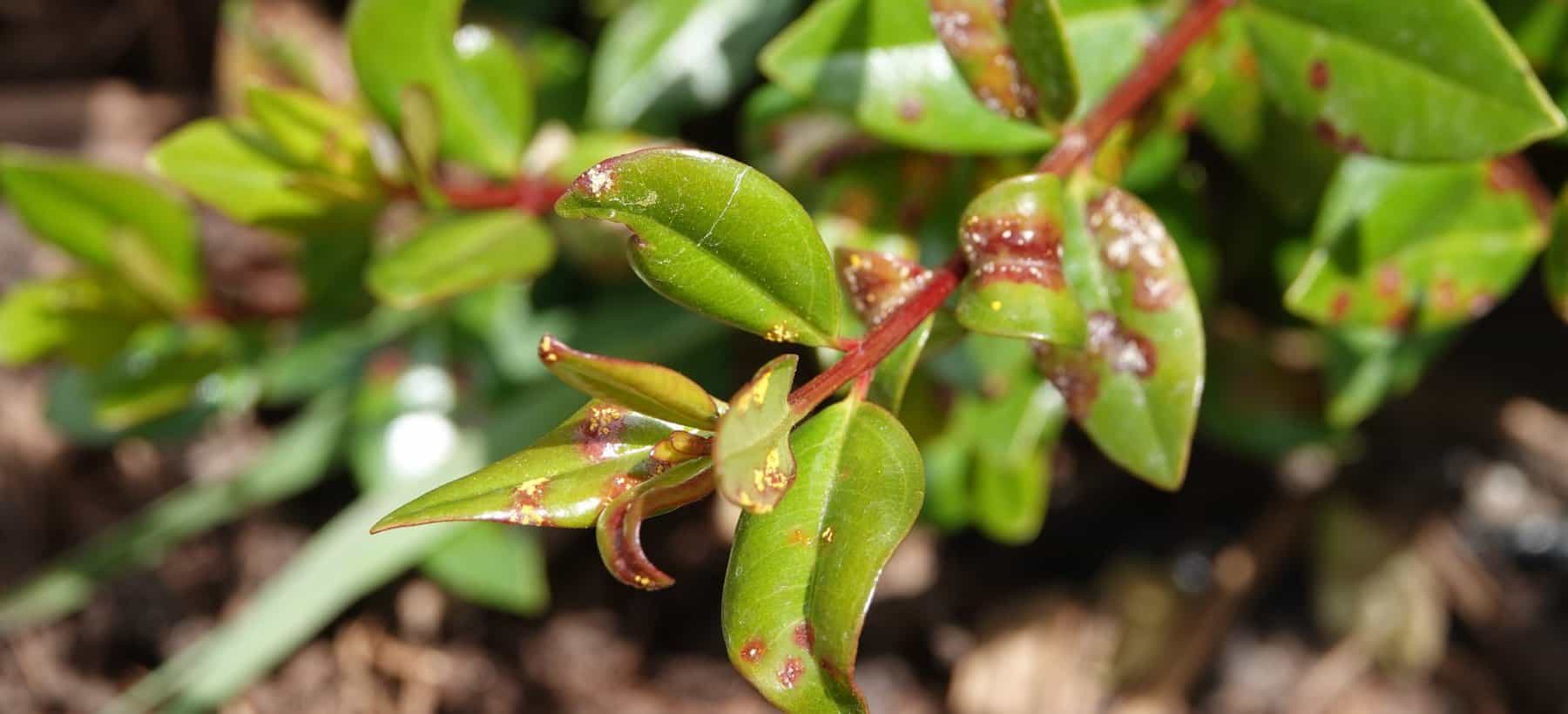Scientists in Australia and New Zealand have been studying how the fungus does this, and NRT is proud to support research to answer this key question. The main focus of this research is to explore the molecular basis of the disease, in particular how both the plant and the fungus are reacting to each other and producing new attack or defence molecules.
“I work on pathogens and their impact on plants,” says Grant Smith, leader of the project. “High quality genomes are a key resource to explore the molecular basis of disease and thus develop specific ways to stop the disease process.”
Key resources for this work are the genomes of the pathogen and the host. In 2021, the A. psidii genome, the largest fungal genome assembled too date, was published. Assembling this genome (of an Australian isolate of the pathogen) was a collaborative effort between the University of Sydney, Plant & Food Research, the Australian National University, and several other institutes. Just as the human genome leads to a greater understanding of human diseases and genetics, the A. psidii genome has revealed genes that may be involved in the pathogen avoiding being recognised by the plant as it invades and manipulates living plant cells.
The first step in translating a gene to a molecule is called transcription, where an RNA copy of the gene DNA is produced. This RNA transcript is then translated to produce a protein molecule. By studying the changes in the amount of the different RNA transcripts that are produced, scientists can determine which genes in both the fungus and the plant are being turned on, turned up, turned down or turned off during the infection process. This research, supported by Beyond Myrtle Rust, has revealed the turning on, and turning up of a number of fungal genes for proteins known as effectors. In other pathogen-plant systems, effector proteins are important for the pathogen to interact with, and manipulate, plant cells for the benefit of the pathogen, including preventing the triggering of programmed cell death.
For the first time, scientists have identified potentially key pathogen genes that are essential for the myrtle rust pathogen to infect a plant. Now, with support from NRT, research focusing on how these effectors interact with the plant cell molecules is progressing.
“With Renwick Dobson and Claudia Meisrimler at the Biomolecular Interaction Centre (BIC, University of Canterbury), whom I’ve worked with in the past on pathogen genes and proteins, we developed a plan to investigate what plant processes were being targeted by the fungal effectors”.
Grant Smith
Tyler Johns, an Honours student at BIC, was able to express and purify the first A. psidii effector. The research team believe this is the first time this has been achieved with an A. psidii protein.
The next phase is to seek the plant target of this effector. This involves producing a ‘plant library’ using the recently assembled mānuka genome (produced after consultation and approval from Ngāti Porou Miere Ltd, representing the Ngāti Porou iwi). Once the research team have found the mānuka proteins being manipulated by the fungal effector protein, they can propose and test ideas to stop that interaction and hopefully prevent myrtle rust disease from developing.
NRT is proud to have played a small role in this longitudinal, multi-disciplinary, multi-organisational research to understand and stop this very difficult and destructive pathogen.
